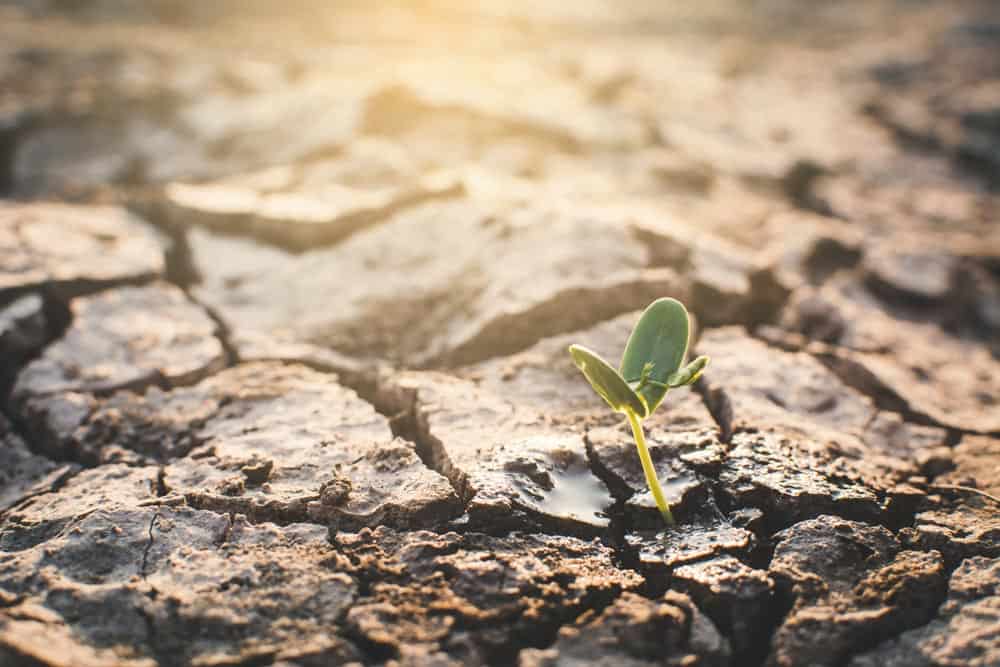Weather shifts and extremes are causing farmers to reassess how they grow crops to secure their livelihoods in the future.
Today’s weather seems more unpredictable than ever.
Between 1901 and 2020, global temperatures rose nearly two degrees Fahrenheit. And rising sea levels and weather pattern changes have caused increased drought and flooding.
At the same time, the world population continues to increase. Estimators predict it will grow to nearly ten billion by 2050. That’s 3.4 billion more mouths to feed.
But the impacts of climate change on agriculture continue to unfold, making meeting these needs more challenging every day. After all, agriculture is highly dependent on good weather, adequate rainfall, and other stable climate variables.
Farmers must be aware of how a changing climate will affect their crops and learn ways to adapt so they can improve their yields.
How Weather Impacted by Climate Change is Affecting Crops
Climate change is having widespread impacts on global agriculture production. It’s disrupting food availability, reducing access to food, and impacting food quality.
 In fact, 80 percent of farmers believe climate change is occurring, according to an Iowa State University Extension and Outreach survey.
In fact, 80 percent of farmers believe climate change is occurring, according to an Iowa State University Extension and Outreach survey.
And not only do farmers agree the climate is changing, but many already see it impacting crop yields and negatively impacting food security in some areas.
A new study from NASA reveals that climate change may affect the production of corn and wheat as early as 2030 in a high greenhouse gas emissions scenario. The study predicts corn crop yields will decline 24 percent, while wheat crop yields could experience a growth of approximately 17 percent.
Areas like North and Central America, West Africa, Central Asia, Brazil, and China may see their corn yields decline in the coming years due to beyond average temperatures. Wheat prefers more temperate climates, so it may see broader growth as temperatures increase in areas like the Northern U.S., Canada, North China Plains, Central Asia, Southern Australia, and East Africa.
The NASA study found that soybean and rice projections showed a decline in some regions, but overall impacts still differed globally.
Temperature increases, rainfall pattern shifts, and elevated surface carbon dioxide concentrations from greenhouse gas emissions are the main culprits impacting these crops. Warming weather can also lead to increasing pest infestations and disease.
Hotter temperatures can lead to faster evaporation, resulting in more droughts and water shortages. This can become a problem for the 10 percent of crops grown in the world’s major food production regions that are irrigated with nonrenewable groundwater. In these areas, aquifers are draining faster than they’re refilling.
Farmers Who Adapt Have the Best Chances for Success
Agricultural practices can influence how farms fare in the future amid climate change.
Farmers who modernize their growing methods and diversify their fields will have better results than those who don’t, according to some climate change experts.
It starts with tailoring planting dates and irrigation schedules based on seasonal weather forecasts. Growers can also experiment with new and more drought- and heat-resistant varieties that can better stand up to weather stress.
Making soils more resilient is a key strategy growers can embrace since retaining soil moisture is helpful for easing drought’s effects on crop yields. A no-till strategy, for instance, can curb erosion to help keep soil intact.
Regenerative agriculture is also gaining traction. This is a farming practice that rebuilds soil organic matter and restores degraded soil biodiversity, resulting in both carbon capture and water cycle improvements. Some examples of this are using cover crops, reducing tilling, diversifying crop rotations, spreading compost, reducing soil runoff with field buffers, and integrating crops and livestock where feasible.
But as abiotic stress impacts crops from external conditions, such as prolonged warmer temperatures, higher salinity due to lack of water, or a shift in rain patterns that brings too much water to a crop, growers can also focus on the plant’s health from the inside out.
Utilizing the right nutritional and biostimulant combinations can provide crops with the environmental stress support they need when conditions are less than ideal. Biostimulants are products made of various organic, or naturally occurring, elements that have been scientifically proven to support physiological processes or hormonal responses in plants. This added support for a crop enables it to more effectively take up and use nutrients and therefore have better responses to stressful conditions, which leads to higher yields.
Growers will need to continue to adopt and leverage a combination of innovative tools and practices available to them to combat the changing climate conditions facing both the agricultural industry and our food supply.
Looking for crop solutions that can help growers maximize crop nutrients and water intake? Stoller’s plant-performance products help support optimum growth when weather or stress conditions can cause imbalances. Learn more about how Stoller can help growers boost crop yield and quality by contacting a local subsidiary.





 Argentina
Argentina Australia
Australia Belize
Belize Brazil
Brazil Chile
Chile China
China Canada
Canada Colombia
Colombia Costa Rica
Costa Rica Dominican Republic
Dominican Republic El Salvador
El Salvador Europe
Europe Guatemala
Guatemala Honduras
Honduras India
India Mexico
Mexico Nicaragua
Nicaragua Panama
Panama Peru
Peru Philippines
Philippines South Africa
South Africa Turkey
Turkey